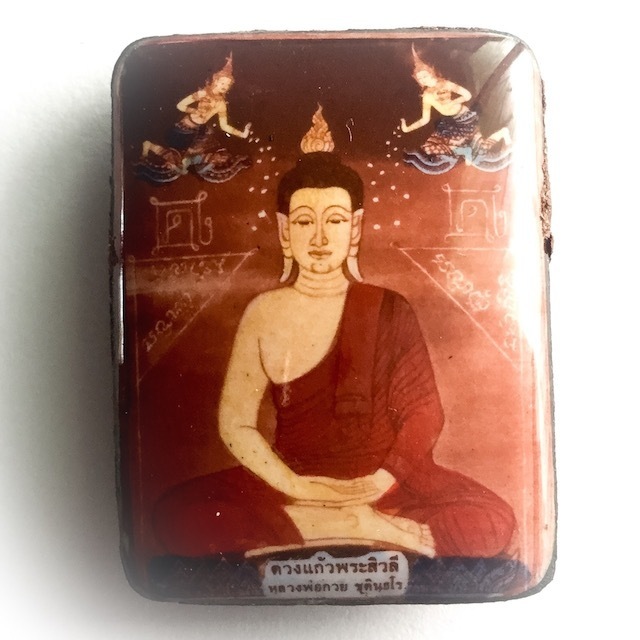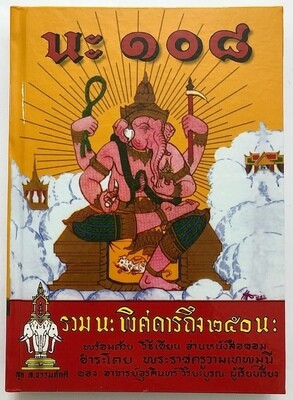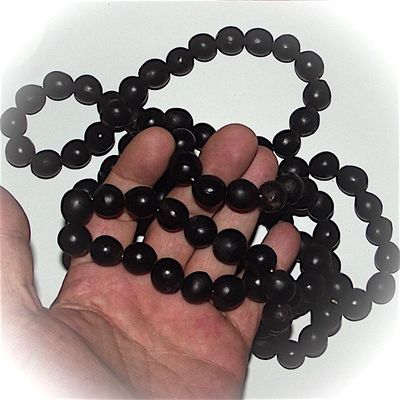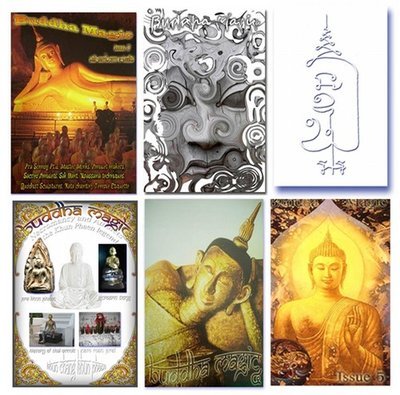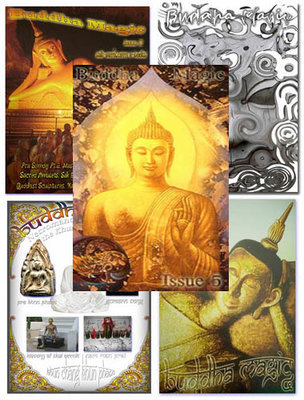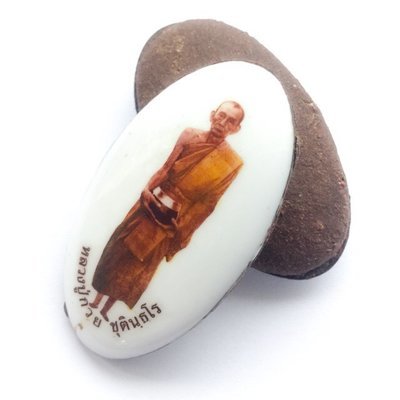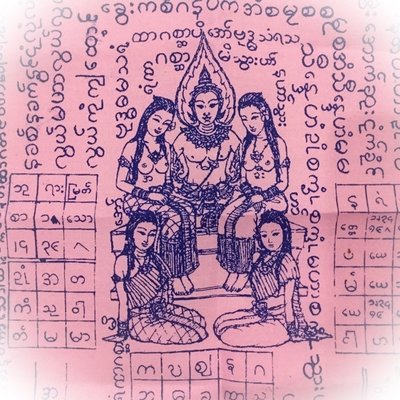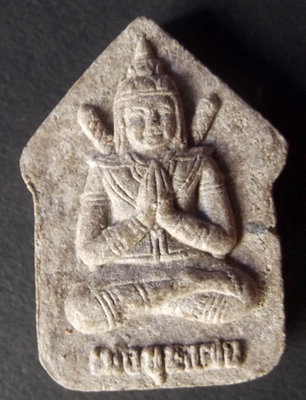

Thailand Amulets
Thai Buddhist and Magical amulets for Wealth, Health, Love and Happiness.
Vast Selection of Amulets
We have a vast selection of over 4000 different kinds of Sacred Amulets and Bucha Items, including Buddha Image, Loi Ongk statuettes, Buddhist Monk Coin Amulets, Takrut Charms, Nam Man Prai Oils, Mai Kroo Wands, Mitmor Ritual Knife, Lek Lai Kaya Siddhi Elemental Substance, Kumarn Tong, Gambling Amulets, Mae Nang Prai, Muan Sarn Sacred Powder Amulets, Palad Khik, Animist Charms, Necromantic Amulets, Buddhist, Animist, Brahman and Necromantic Amulets.
Locket Duang Gaew Pra Sivali Buddha Amulet with Relics and Muan Sarn Powders of Luang Por Guay - Ajarn Meng Khun Phaen
Pra Duang Gaew Sivali (Wicha Luang Por Guay) Buddha Amulet, with Muan Sarn of Luang Por Guay, Sivali Relics, and Sacred 108 Herbal Powders with Dork Tong Flowers.
Small size limited edition locket (only 400 made), featuring the Sakyamuni Gautama Buddha seated in the Meditative Bliss of Enlightenment, with Celestial Devas in Attendance.
This locket is in fact a replica in design of the Duang Gaew Pra Sivali of Luang Por Guay, of Wat Kositaram, in Chainat. Luang Por Guay is a Kroo Ba Ajarn who Ajarn Meng Revered and follows his teachings, and who extends the existence of the Wicha and Amulets of Luang Por Guay through producing amulets in their traditional method and likeness.
Luang Por Guay would give the Kata Pra Chimplee (Sivali) for Bucha to his Duang Gaew Pra Sivali amulets, but this locket can be used for Bucha to any Arahant Buddha, including Siddhatta Gautama and Pra Sivali. Pra Sivali are very popular as luck bringers to carry around at work during the day, and increase ones fortune.
The Muan Sarn powders in the rear face were taken from the Great Luang Por Guay's repository and used to fill this edition, which was made to donate to Wat Kositaram (Chainat) for redistribution, to help them raise funds, and to brting protection and blessings to the Looksit of Luang Por Guay and Wat Kositaram.
A most Auspicious Amulet for Buddhists to Practice Buddhanussati (remembrance of the Buddha and is teachings), and to strengthen one's own practice with, and strengthen auspicious Karma through metta practice, to Generate Metta Maha Niyom Maha Lap from the Locket - a most inspiring and subtle Buddhist Amulet, from Lay Master Ajarn Meng Khun Phaen. Especially Sacred for those devotees who also revere the great Luang Por Guay, who is the Kroo ba Ajarn of Ajarn Meng Khun Phaen, for ther fact that this amulet is a 'Serp Tord Dtamnan' amulet (perpetuation of the Luang Por Guay Lineage Tradition).
The Locket represents a Bucha, be it Pra Sivali, or the Gautama Buddha, depends on your preference for which Buddha you wish to revere with this image. We Recommend to pray to both the Lord Buddha Sakyamuni, and to Pra Sivali in conjunction for best results.
The word Buddha means "awakened one" or "the enlightened one". "Buddha" is also used as a title for the first awakened being in a Yuga era. In most Buddhist traditions, Siddhartha Gautama is regarded as the Supreme Buddha (Pali Sammāsambuddha, Sanskrit Samyaksaṃbuddha) of the present age.
Gautama taught a Middle Way between sensual indulgence and the severe asceticism found in the śramaṇa movement common in his region. He later taught throughout regions of eastern India such as Magadha and Kosala. Gautama is the primary figure in Buddhism and accounts of his life, discourses, and monastic rules are believed by Buddhists to have been summarized after his death and memorized by his followers.
Various collections of teachings attributed to him were passed down by oral tradition and first committed to writing about 400 years later. According to the early Buddhist texts, after realizing that meditative dhyana was the right path to awakening, but that extreme asceticism didn't work, Gautama discovered what Buddhists call the Middle Way — a path of moderation away from the extremes of self-indulgence and self-mortification, or the Noble Eightfold Path, as was identified and described by the Buddha in his first discourse, the Dhammacakkappavattana Sutta. In a famous incident, after becoming starved and weakened, he is said to have accepted milk and rice pudding from a village girl named Sujata.
Such was his emaciated appearance that she wrongly believed him to be a spirit that had granted her a wish.
Following this incident, Gautama was famously seated under a pipal tree—now known as the Bodhi tree—in Bodh Gaya, India, when he vowed never to arise until he had found the truth. Kaundinya and four other companions, believing that he had abandoned his search and become undisciplined, left. After a reputed 49 days of meditation, at the age of 35, he is said to have attained Enlightenment.
According to some traditions, this occurred in approximately the fifth lunar month, while, according to others, it was in the twelfth month. From that time, Gautama was known to his followers as the Buddha or "Awakened One" ("Buddha" is also sometimes translated as "The Enlightened One").
According to Buddhism, at the time of his awakening he realized complete insight into the cause of suffering, and the steps necessary to eliminate it. These discoveries became known as the "Four Noble Truths", which are at the heart of Buddhist teaching. Through mastery of these truths, a state of supreme liberation, or Nirvana, is believed to be possible for any being. The Buddha described Nirvāna as the perfect peace of a mind that's free from ignorance, greed, hatred and other afflictive states,[web 16] or "defilements" (kilesas). Nirvana is also regarded as the "end of the world", in that no personal identity or boundaries of the mind remain. In such a state, a being is said to possess the Ten Characteristics, belonging to every Buddha.
According to a story in the Āyācana Sutta (Samyutta Nikaya VI.1) — a scripture found in the Pāli and other canons — immediately after his awakening, the Buddha debated whether or not he should teach the Dharma to others. He was concerned that humans were so overpowered by ignorance, greed and hatred that they could never recognise the path, which is subtle, deep and hard to grasp. However, in the story, Brahmā Sahampati convinced him, arguing that at least some will understand it. The Buddha relented, and agreed to teach.
This is now an extremely rare item to still find around (only 400 in existence), for indeed Ajarn Meng's amulets almost always sell out within even just a few months of release. We are proud to be able to provide this amulet as one of the choice options in our store, for it is both powerful, collectible and a classic miniature Buddhist Art creation that is a valuable acquisition for any connoisseur of Ajarn Meng Khun Phaen' amulets, who knows a powerful amulet when he sees one. Those who know Ajarn Meng's amulets already will need no convincing of the power of his amulets.
AJARN MENG
Ajarn Meng is one of Thailand's leading, Most Famous and Long standing Masters, whose Trajectory reaches back to touch the Previous generation of some of the Greatest Masters of all time, and whose Wicha has been inherited from some of the Greatest of the previous generation of Masters of Maha Sanaeh Magic. Ajarn Meng's amulets are revered and highly sought after by devotees all around the world.

Those who know Ajarn Meng's amulets already will need no convincing of the power of his amulets. We feel that this Gautama Locket, reveals its charm and beauty to you on its own merits, without us having to say much in its favor. Ajarn Meng's amulets are revered and highly sought after by devotees all around the world. He is a devotee of Luang Por Guay Chudtintaro of Wat Kositaram and a faithful servant of Buddhism.
Above Pic; Amulets of Ajarn Meng donated for the temple of Wat Kositaram to distribute and keep the funds for their needs. Not only does Ajarn Meng donate money to temples, he also donates his famously popular amulets for the devotees. He donates funds to Wat Kositaram and his other preferred temples in line with the true reasons for all Ajarns to make and raise funds with amulets, namely, to preserve and promote the teachings of the Buddha, but helping to finance Buddhist Temple Projects.
Below Pic; Ajarn Meng donates amulet editions to the Wat Hua Den Temple.


Above; Ajarn Meng donates money to the temple of Wat Po Pak Hai in Ayuttaya

Above; Ajarn Meng donates funds (about 5000$) to Wat Pradoo Song Dhamma Temple in Ayuttaya
This item is, along with almost all of Ajarn Meng Khun Phaen's amulets, an extremely rare item to still find around, for indeed Ajarn Meng's amulets almost always sell out within even just a few months of release. We are proud to be able to provide this amulet as one of the choice options in our store, for it is both powerful, collectible and a classic miniature Buddhist Art creation that is a valuable acquisition for any connoisseur of Ajarn Meng's amulets.

Those who know Ajarn Meng's amulets already will need no convincing of the power of his amulets. We feel that this Khun Phaen reveals its charm and beauty to you on its own merits, without us having to say much in its favor.
Ajarn Meng's amulets are revered and highly sought after by devotees all around the world. He is a devotee of Luang Por Guay Chudtintaro of Wat Kositaram and a faithful servant of Buddhism. He has a long and highly respectable trajectory behind him, and hopefully still a long trajectory in front of him for a long time into the future.
His Magic is extremely powerful despite leaning much more to the White Arts more than Dark Arts, due to his devotion to making Merits with the many temples and auspicious charitable projects , which he then dedicates to the Devas who come to empower and bless the amulets in Ceremonial Invitation of Wai Kroo.

Kata Aaraatana Pra Krueang is a specialized Kata for chanting when putting on amulets, taking them off, or when leaving the house or travelling. The Kata asks for protection and blessings to go with you. It is a Special prayer to ask blessings and wish fulfilment from all types of Buddhist Amulet. Because this Prayer calls upon the triple gem to bestow blessings, it is also possible to use without any Amulets at all, empowering results purely with the power of prayer and faith.
Before chanting to any amulets, you should always chant Namo Dtassa, and/or the Kata to ask for refuge (Kata Dtrai Saranakom) the Triple Gem first
Kata for Chanting to Amulets (Kata Aaratanaa Pra Krueang)
Puttang Aaraatanaanang
Tammang Aaraatanaanang
Sangkang Aaraatanaanang
Make your prayer/wish
Puttang Prasittimae
Tammang Prasittimae
Sangkang Prasittimae
Chant this Kata 3 times whenever you are about to place the chain over your head or put on the amulets, and also when you take them off.
The Kata calls upon the power of the Buddha, Dhamma and Sangha to be with you and protect and Guide you.
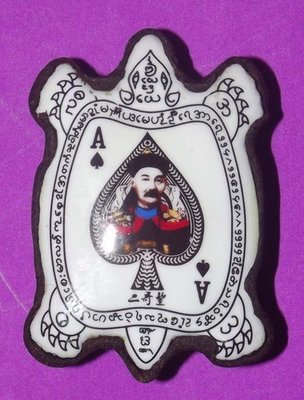
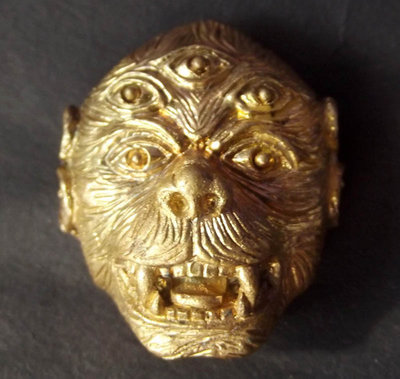

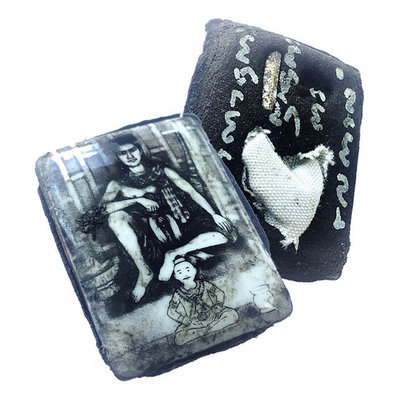
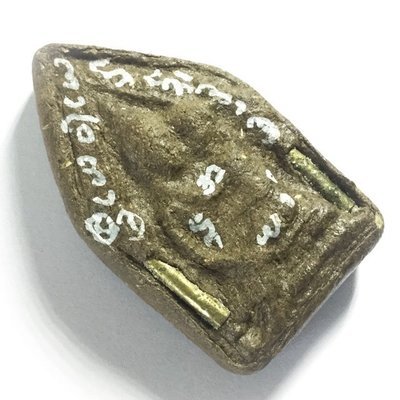
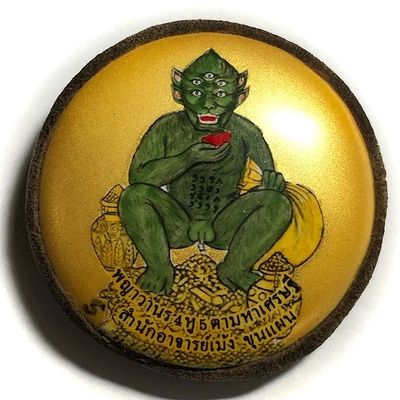
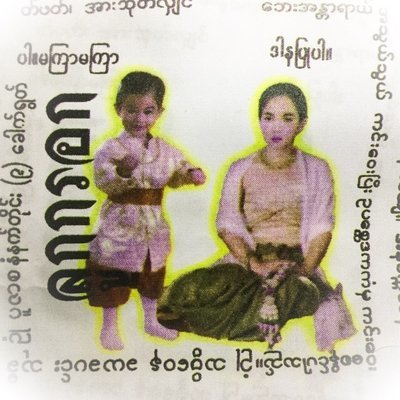


Contact Us
Follow Us on Youtube
About Us
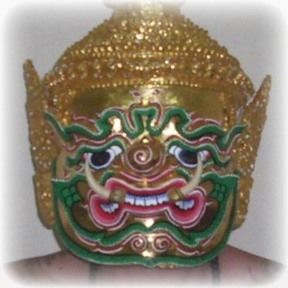
Ajarn Spencer
Proprietor
Thailand Amulets is owned and Administrated by Thai Occult and Amulet expert, Ajarn Spencer Littlewood who guarantees only authentic blessed amulets, and a free gift with every order, as well as his safe delivery or money back guarantee. https://facebook.com/ajarnspencer
